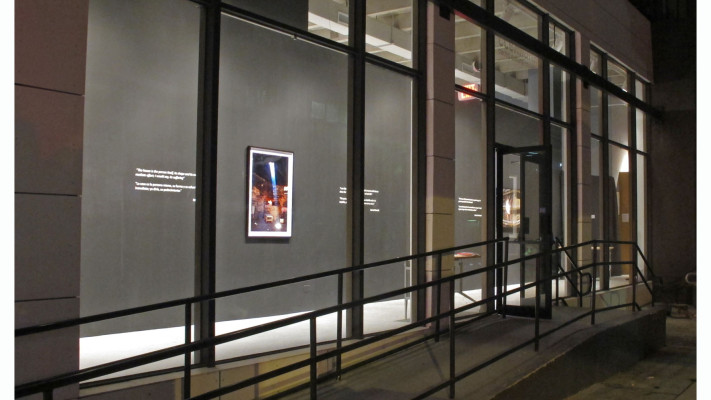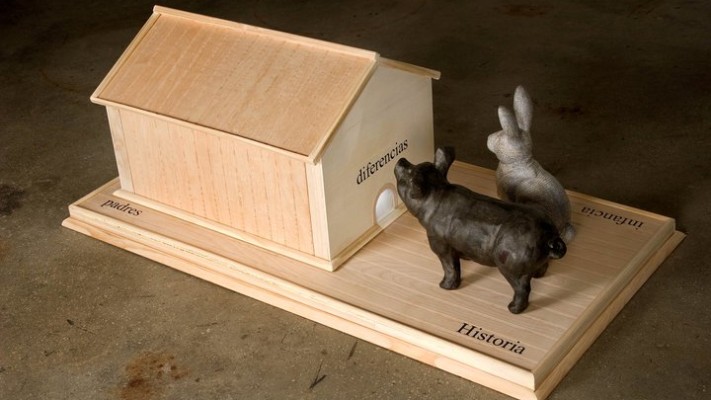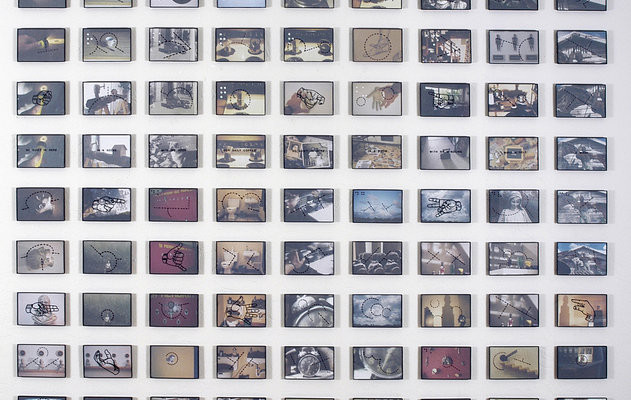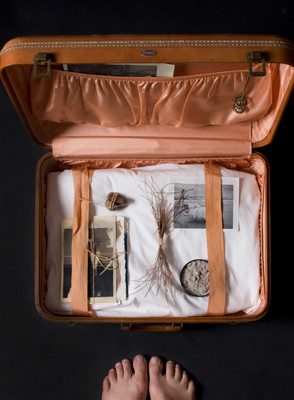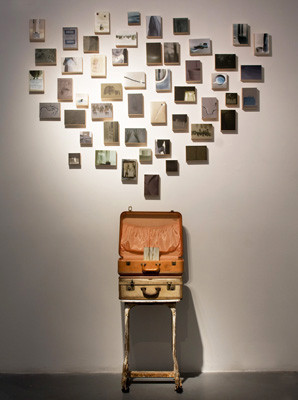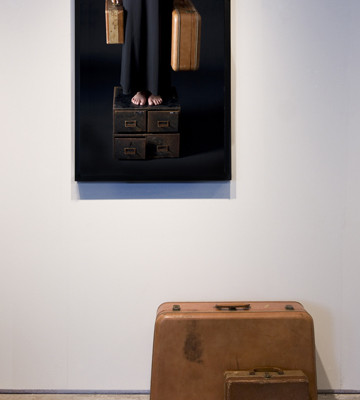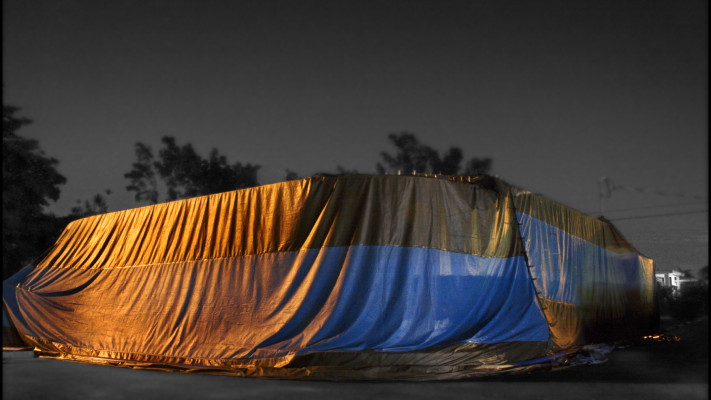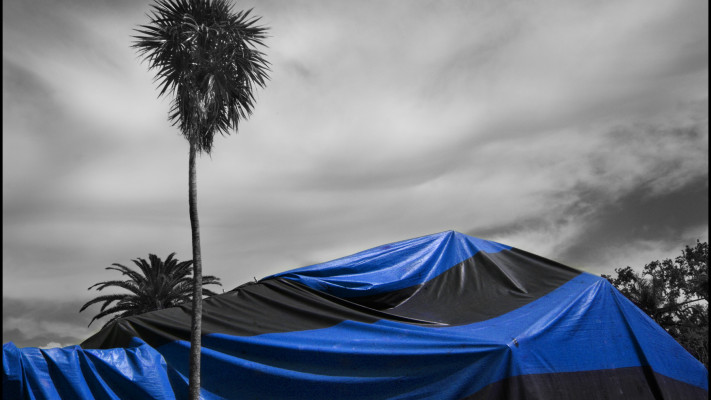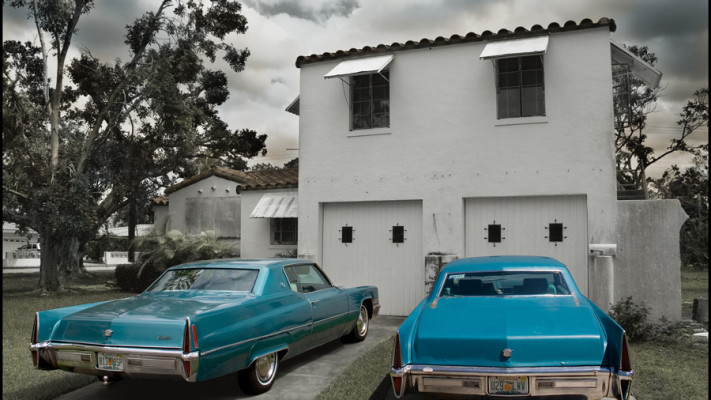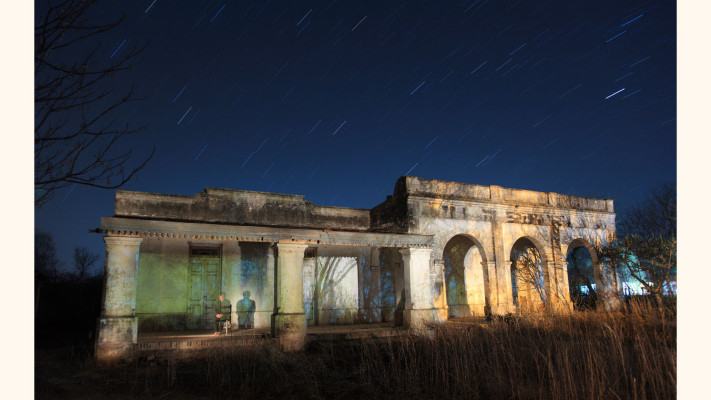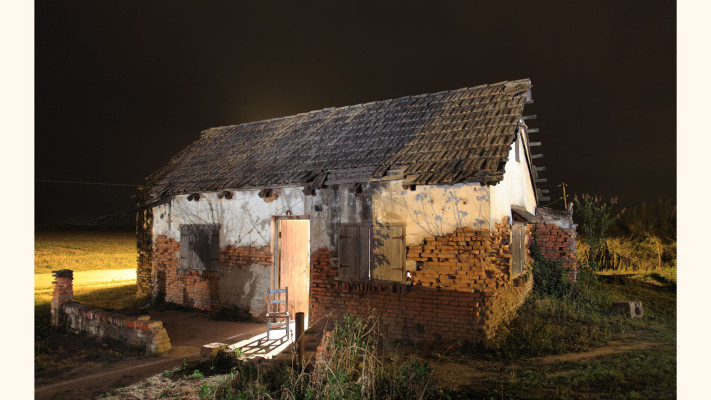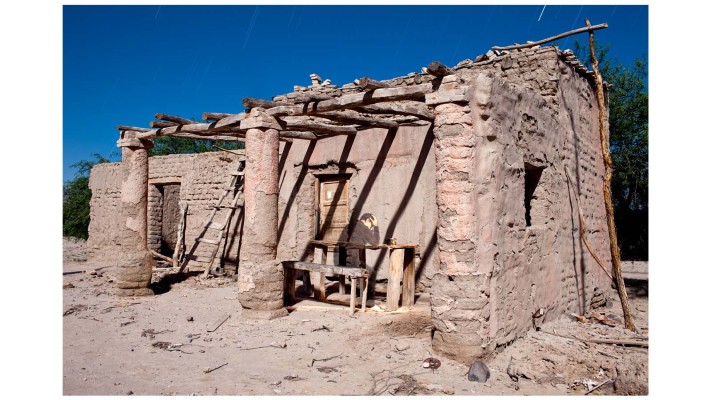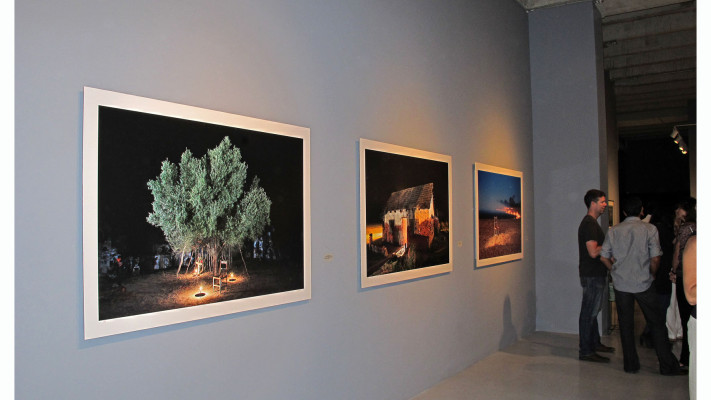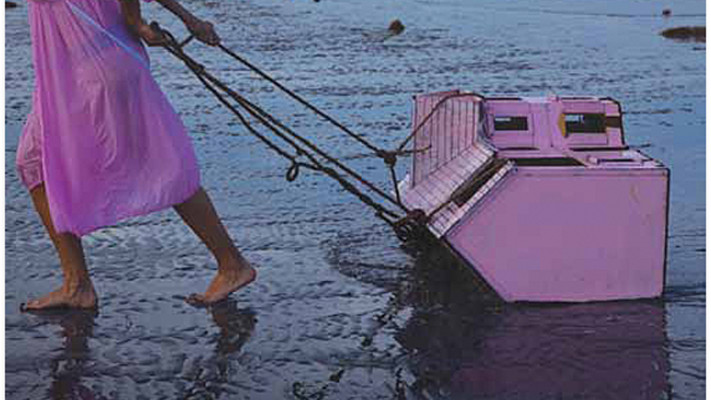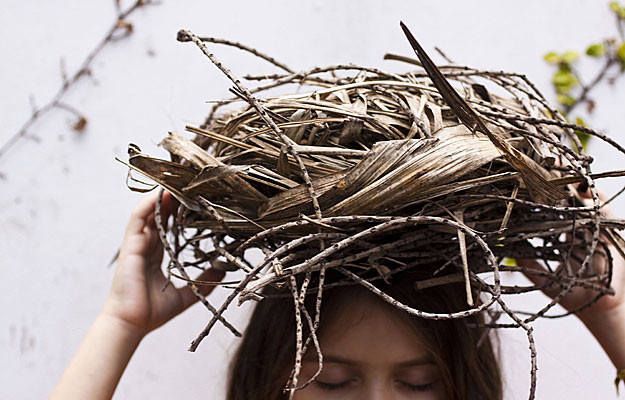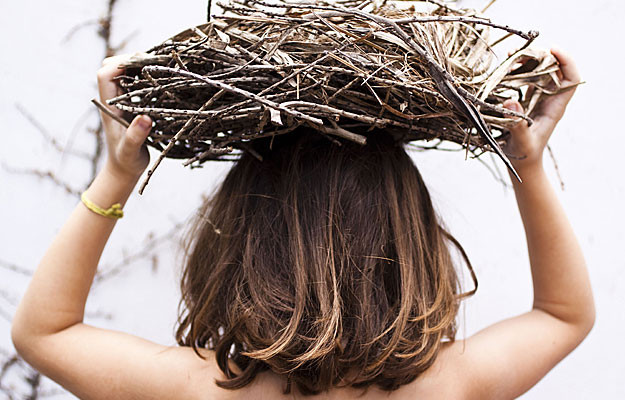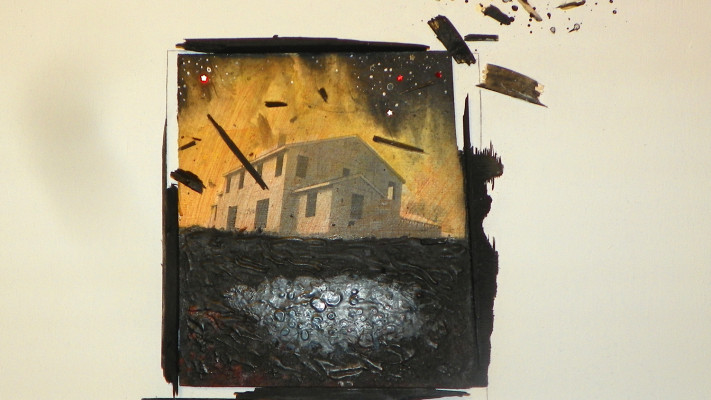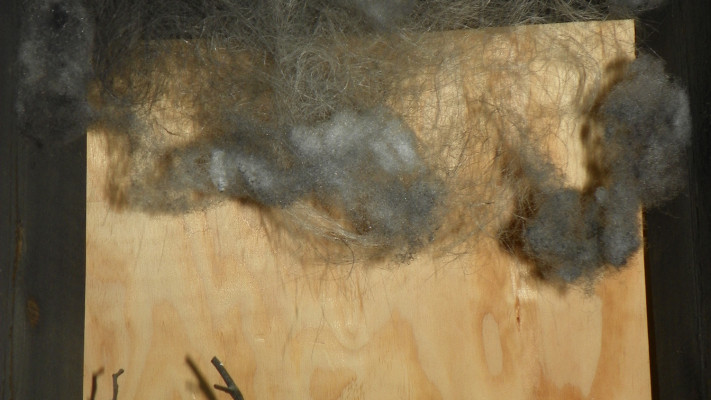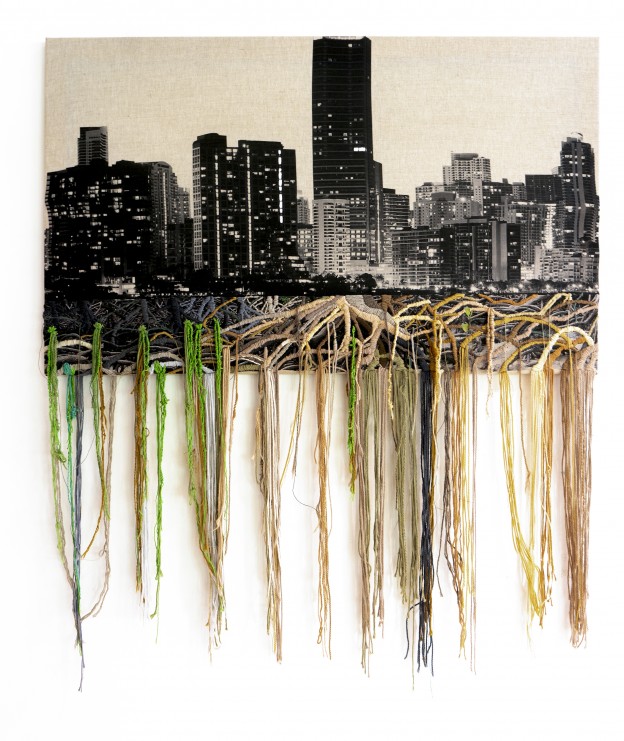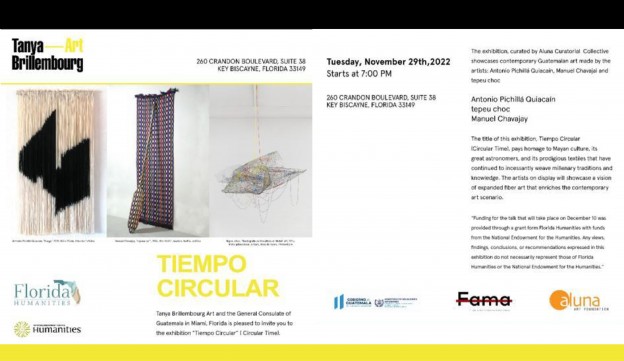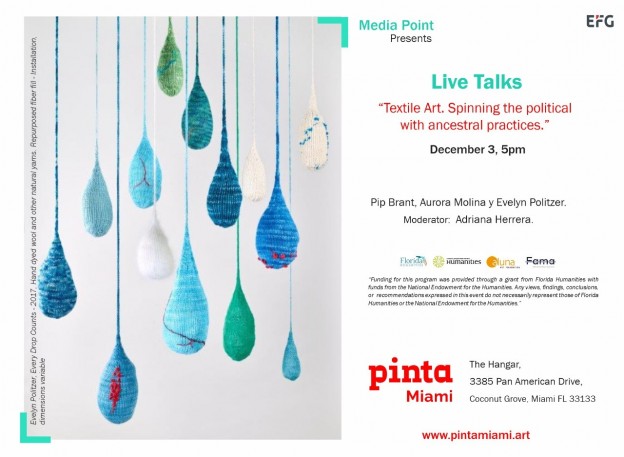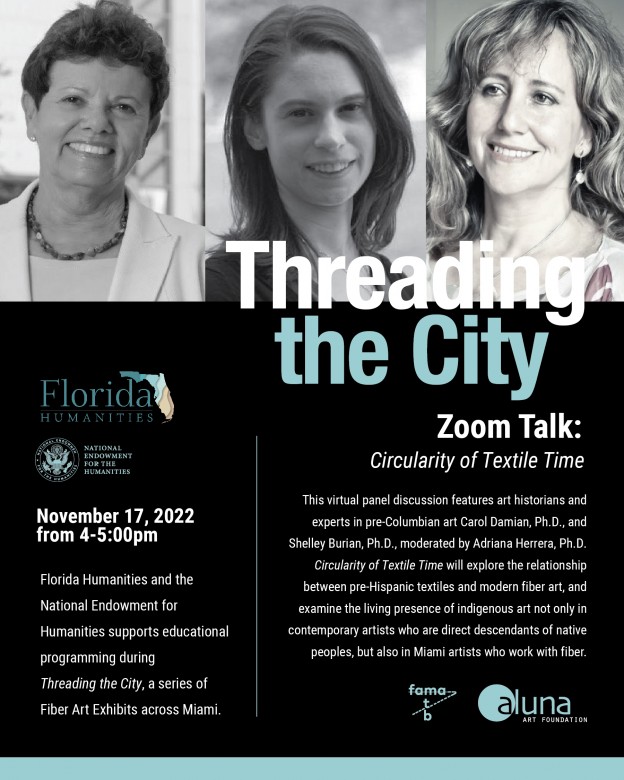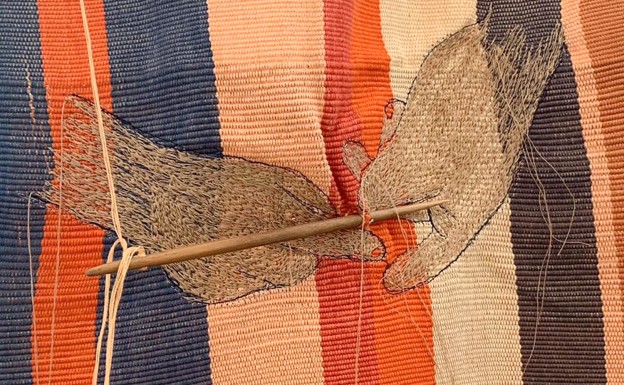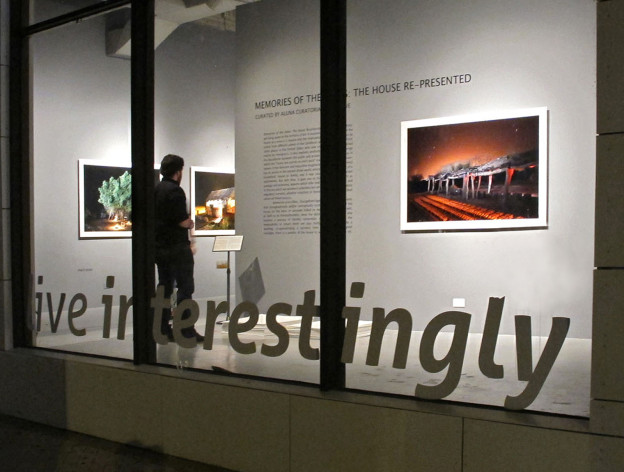
Memories of the Oikos: The House Re-presented
Pablo Soria, Marina Font, Félix González-Torres, Amalia Caputo, Rogelio López Marín “Gory”, Liliam Domínguez, Rubén Torres Llorca, José Pacheco, Gean Moreno and Ernesto Oroza.
Curated by Aluna Curatorial Collective
From September 6th to October 15th, 2012 at Centro Cultural Español de Miami (CCE)
THE EXHIBITION
by Adriana Herrera and Willy Castellanos
The human need for shelter gave rise to the first of the arts, house architecture, which as Walter Benjamin wrote in Illuminations, “has never been idle.” “Its history is longer than that of any other art, and its effect ought to be recognized in any attempt to account for the relationship of the masses to the work of art.” From cave-dwellings to modern apartments, the house, as archetype, is the primordial refuge of the body, the skin that envelops the ego, the place that contains the myth of return. And still, contrary to what happens with other arts, which demand an attitude of visual contemplation, we take possession of houses based on habit, with a certain perceptive indifference which Benjamin also understood.
Memorias del Oikos, (la casa re-presentada)/ “Memories of the Oikos (The House Re-presented)”, the exhibition curated by Aluna Curatorial Collective (Adriana Herrera and Willy Castellanos) which opens on September 15 at the Centro Cultural Español in Miami, relocates this archetypal living space to the territory of art. It assumes the representation of the house as a means to inquire into the implications of its representation by artists from different places in the Caribbean and Latin America, or from other places in the United States who now reside in this city inhabited mainly by immigrants. It also explores aesthetic strategies that challenge the boundaries between the public and private spheres, and the ways in which the “home one carries on one’s back” may have different representations in the feminine and masculine imaginaries.
The term oikos (οἶκος) has its source in the ancient Greek world, where it was the equivalent of a household, house or family, and it was associated with the earliest settlements. But with time, it gave rise to the prefix in words such as ecology and economy, aspects which refer both to the environment and to this era which we assume is sedentary but which is crossed by ceaseless migratory currents, whether voluntary or forced, and often of a political nature or linked to work.
Memorias del oikos… thus gathers together an ensemble of works that iconographically and/or conceptually incorporate the theme of the house on the basis of concepts linked to memory and displacement, as well as to transculturation, since the distance from the origin also involves a process of identity reinvention. Likewise, parallel to the impossibility to return − since the person that returns has changed − there are also multiple ways to fabricate a dwelling, re-appropriating a territory from the imaginary. Beyond nostalgia, there is a poetics of the house to which one returns via art. Then, a visual aesthetic awareness that differs from the usual relationship one has with the habitat fosters a resurgence of the house with its space possessed as refuge.
The exhibition includes a legendary work by Félix González-Torres, reproduced by Carlos and Rosa de la Cruz Collection. This piece reflects the unresolved tension between departing and remaining, and revolutionizing the habitual relationship with the possession of the work, allows each person to carry away a free impression of this conceptual installation. Besides, the exhibition gathers together photographs by the Argentineans Pablo Soria and Marina Font, the Venezuelan Amalia Caputo, and the Cubans Rogelio López Marín “Gory” and Liliam Domínguez; sculptures and installations by the Cuban Rubén Torres Llorca, and paintings and three-dimensional works by the Colombian José Pacheco, as well as a project featuring printed material by the New-York-born artist of Hispanic origin Gean Moreno and the Cuban Ernesto Oroza, which contains design patterns found in popular sectors in Santo Domingo. There people extend the private domain of the house to the public space of the sidewalk, whether by building a tiled path or, if they have no resources, carving geometric shapes in the wet cement as a cunning form of aesthetic possession that reflects the shrewdness of appropriating the space without needing a capital. The multiple processes used to re-invent the house or the appropriation of other aesthetic parameters to reconstruct the notion of shelter generate artistic processes that reflect forms of relationship with the environment and may well encompass a wide range of variants, from a poetics of privacy to a playfulness that puts imagination before economic limitations.
The works of Rubén Torres Llorca inquire into the fissures of everyday life, blurring the boundaries between private and public and recreating the atmosphere of uncertainty present in an oeuvre that raises the question that there is no shelter, no roof allowing contemporary man to dream, in any of the current systems.
Parallel to this, perhaps as an unnoticed thread of continuity dating back to Ancient Greece, where men could live and wander both in the polis and in the oikos, but the presence of women was restricted to the latter space, it is possible to observe in the exhibit the way in which the reflection on gender runs through the re-presentation of the house from the Diaspora.
The refuge-nest supported by the feminine strength that hauls the weight of a thread (sometimes a cord) of continuity, supporting the house along the nomadic route towards another place, can be appreciated in undoubtedly feminine works such as those produced by Caputo and Font. The latter, in addition, participates together with the Cuban-American of Hispanic origin, Rhonda Mitrani, and the American Patricia Schnall Gutiérrez, in a performance that shows the interior rites supporting the oikos based on the incessant tasks carried out by women.
In Soria and Domínguez’s photographs, created as a reverie or flooded in water, and in the small paintings with splintered wood or in the installations created by Pacheco, for whom “there is no return”, it is possible to perceive the way in which what Bachelard calls “the principle of the unpretentious refuge” emerges like a dreamlike return to the houses of the origin, with a mixture of beauty and desolation.
Gory uses the Miami houses to recreate an atmosphere that detaches itself from the environment through a poetics of its own and through a melancholic dialogue with the history of art. The color saturation in certain areas of the photographs refers the viewer to a visual field in constant displacement.
The representation or the extension of the imaginary of the house from the alien place where it is now located, or the transposition to the public space of aesthetic gestures as forms of appropriation, configure in any case modes of re-possession of the house which can be viewed when it is situated as object of the gaze in artistic creation and as an instrument for inquiry into the migrant imaginary of Miami, the mirror of an epoch of increasing nomadism.
We thank the generosity of Carlos and Rosa de la Cruz Collection, as well as the collections of Liza and Arturo Mosquera, and also Andreina Fuentes for lending us some of the works shown in this exhibition.
Memorias del Oikos (La Casa Re-presentada)
LA EXPOSICIÓN
por Adriana Herrera y Willy Castellanos
De la necesidad humana de un refugio surgió la primera de las artes, la arquitectura de la casa que, como escribió Walter Benjamín, en Iluminaciones, “nunca ha sido vana”. “Su historia es más antigua que la de cualquier otro arte y su reclamo de ser una fuerza viva asienta su significado en cada intento de comprender la relación de las masas con el arte”.
Desde las cavernas hasta los apartamentos modernos, la casa, como arquetipo, es el refugio primordial del cuerpo, la cáscara que envuelve el yo, el lugar que contiene el mito del regreso. Y sin embargo, a diferencia de otras artes, que reclaman la actitud de la contemplación visual, nos apropiamos de las casas desde el hábito, con una cierta indiferencia perceptiva que también comprendió Benjamín.
Memorias del Oikos, (la casa re-presentada), exhibición curada por Aluna Curatorial Collective (Adriana Herrera y Willy Castellanos) que inaugura el próximo 15 de septiembre en el Centro Cultural Español de Miami, traslada este espacio habitacional arquetípico al territorio del arte. Asume la iconografía de la casa como un artefacto para indagar en las implicaciones de su representación hechas por artistas provenientes de diversos lugares del Caribe y Latinoamérica, o de otros lugares de Estados Unidos, que ahora residen en esta ciudad constituida por migrantes. Igualmente explora estrategias estéticas que desafían los límites entre lo público y lo privado, y los modos en los que la “casa sobre la espalda” puede tener representaciones diversas en el imaginario femenino y masculino.
El nombre de oikos (οἶκος) proviene del antiguo mundo griego donde equivalía a casa o familia, y estaba asociado a los primeros núcleos de asentamiento. Pero al tiempo, da origen al prefijo de palabras como ecología y economía, aspectos que refieren tanto a la relación con el entorno como a esta era que suponemos sedentaria, pero está atravesado por incesantes corrientes de migraciones forzadas o voluntarias, a menudo de carácter político o laboral.
Memorias del oikos… reúne así un conjunto de obras que incorporan iconográfica y/o conceptualmente el tema de la casa a partir de conceptos vinculados a la memoria y al desplazamiento, así como a la transculturación pues en el distanciamiento del origen hay también un proceso de reinvención de identidad. Igualmente de modo paralelo a la imposibilidad del retorno –ya que quien regresa ha cambiado- hay también múltiples modos de fabricarse una morada, tomando reposesión de un territorio desde el imaginario. Más allá de la nostalgia, hay una poética de la casa a la que se retorna por la vía del arte. Entonces resurge con una conciencia estética visual que difiere de la relación habitual que se tiene con el habitar la casa, con su espacio poseído como refugio.
La exhibición incluye una pieza legendaria de Félix González-Torres reproducida por – Carlos and Rosa de la Cruz Collection – que refleja la tensión irresuelta entre el partir y el permanecer, y que, revolucionando la relación habitual con la posesión de la obra, permite a cada quién llevarse gratuitamente una impresión de esta instalación conceptual. Además presenta fotografías de los argentinos Pablo Soria y Marina Font, de la venezolana Amalia Caputo y de los cubanos Rogelio López Marín “Gory” y Liliam Domínguez; esculturas e instalaciones del también cubano Rubén Torres Llorca, y pinturas y piezas tridimensionales del colombiano José Pacheco, así como un proyecto impreso del neoyorquino de ascendencia hispana Gean Moreno y del cubano Ernesto Oroza que contiene patrones encontrados en sectores populares de Santo Domingo. Allí las gentes extienden el dominio de la casa a la acera pública, bien sea haciendo un camino de baldosas, o, a falta de recursos, tallando formas geométricas en el cemento húmedo, como astuto modo de posesión estética que permite apropiarse del espacio sin necesidad de capital. La multiplicidad de procesos de reinvención de la casa o de apropiaciones de otros parámetros estéticos para reconstruir la noción de refugio genera procesos artísticos que reflejan formas de relación con el entorno, abarcando desde una poética de la intimidad hasta una lúdica que sobrepone la imaginación a las limitaciones económicas.
Las obras de Rubén Torres Llorca indagan en las fisuras de la vida cotidiana borrando los límites entre lo privado y lo público y recreando la atmósfera de incertidumbre presente en una obra que plantea que no hay lugar de refugio ni techo donde soñar para el hombre contemporáneo en ninguno de los sistemas vigentes.
Paralelamente, quizás como un inadmitido hilo de continuidad que se remonta a la antigua Grecia, donde el hombre podía morar y merodear tanto en la polis como en el oikos, pero la mujer estaba restringida a este último espacio, es posible advertir en la exhibición el modo en que la reflexión de género atraviesa la re-presentación de la casa desde la diáspora.
El refugio-nido sostenido por la fuerza femenina que arrastra el peso de un hilo (a veces soga) de continuidad que sostenga la casa en la ruta nómade hacia otro lugar, se aprecia en obras indudablemente femeninas como las de Caputo y Font. Esta última además participa junto con la cubano-americana de descendencia hispana, Rhonda Mitrani y la americana Patricia Schnall Gutiérrez, en un performance que evidencia los ritos interiores de sostenimiento del oikos a partir de incesantes labores ejecutadas por las mujeres.
En las fotos de Soria y Domínguez, creadas como una ensoñación o inundadas de agua, y en las pequeñas pinturas con maderas astilladas o en las instalaciones de Pacheco, para el cual “no hay retorno”, puede advertirse cómo lo que Bachelard llama “el principio de la modestia del refugio” surge como regreso onírico a las casas del origen, con una mezcla de belleza y desolación.
Gory usa las casas de Miami para recrear una atmósfera que huye del entorno a través de una poética propia y de un melancólico diálogo con la historia del arte. La saturación de colores en ciertas zonas de las fotografías remite a un campo visual en continuo desplazamiento.
La representación o extensión del imaginario de la casa desde el lugar ajeno al que se ha llegado, o la trasposición al espacio público de gestos estéticos como formas de apropiación, configuran en todo caso modos de reposesión de la casa que se visualizan al situarla como objeto de la mirada en la creación artística y como artefacto de indagación en el imaginario migrante de Miami, espejo de una época de creciente nomadismo.
Agradecemos a Carlos and Rosa de la Cruz Collection, así como a las colecciones de Liza y Arturo Mosquera y a la de Andreina Fuentes, la generosidad de habernos prestado algunas de las obras exhibidas.



